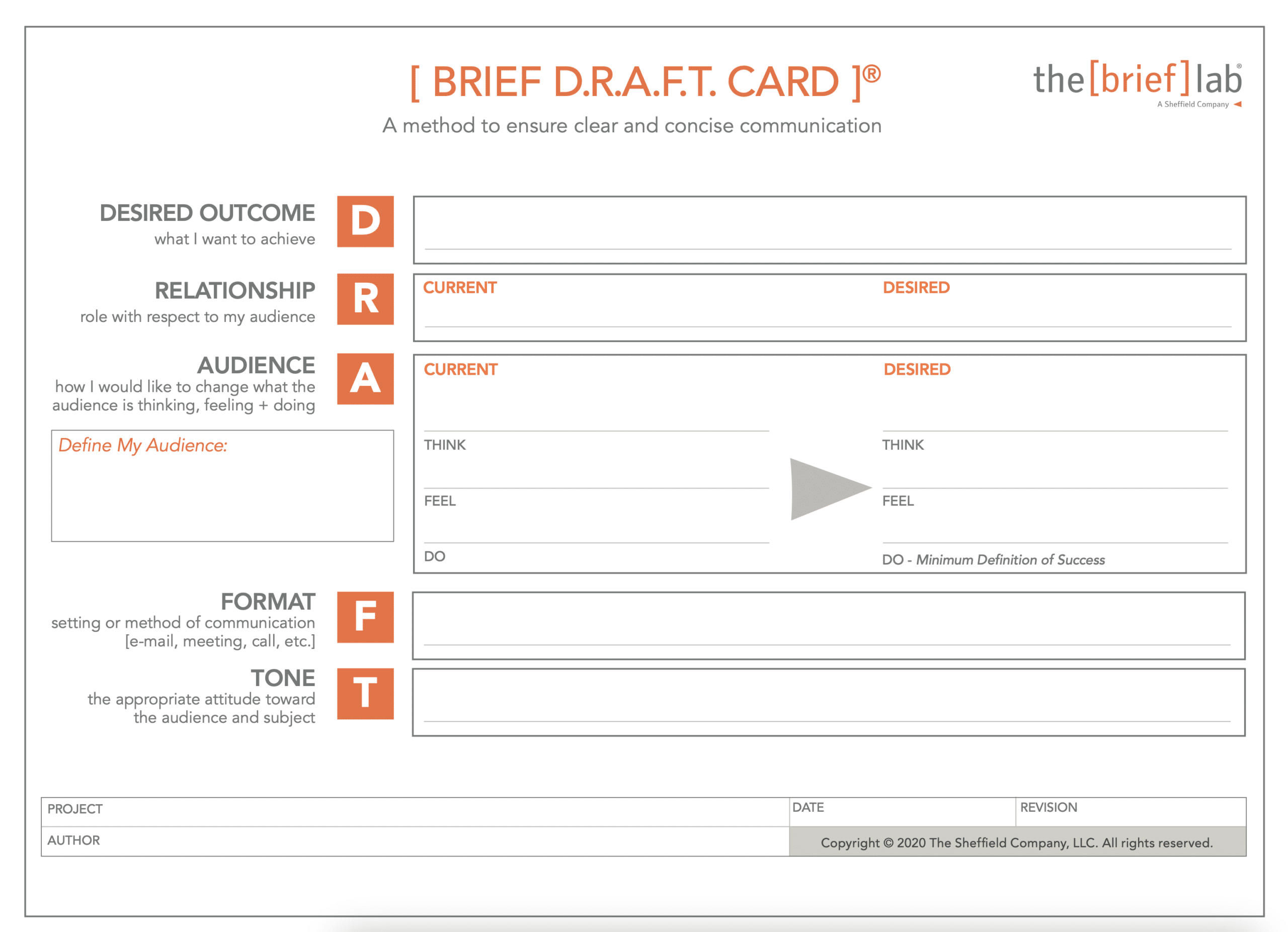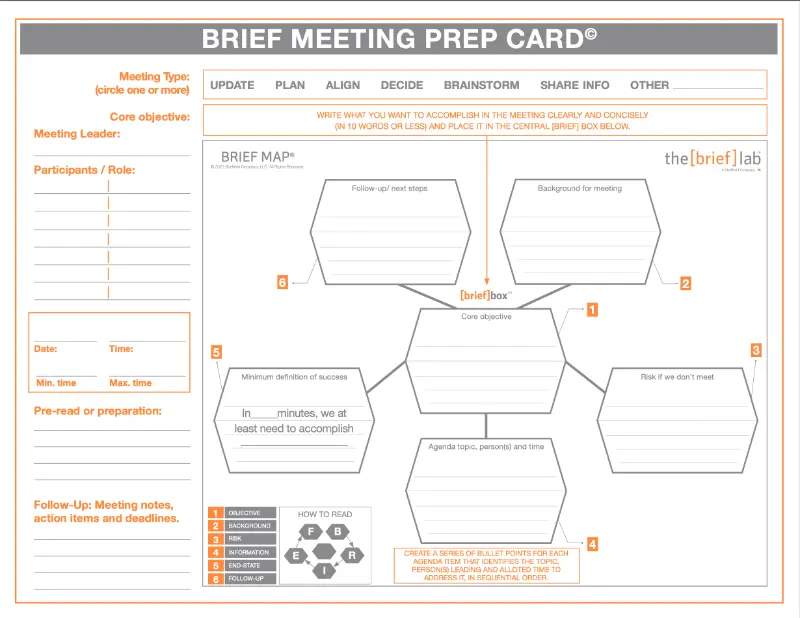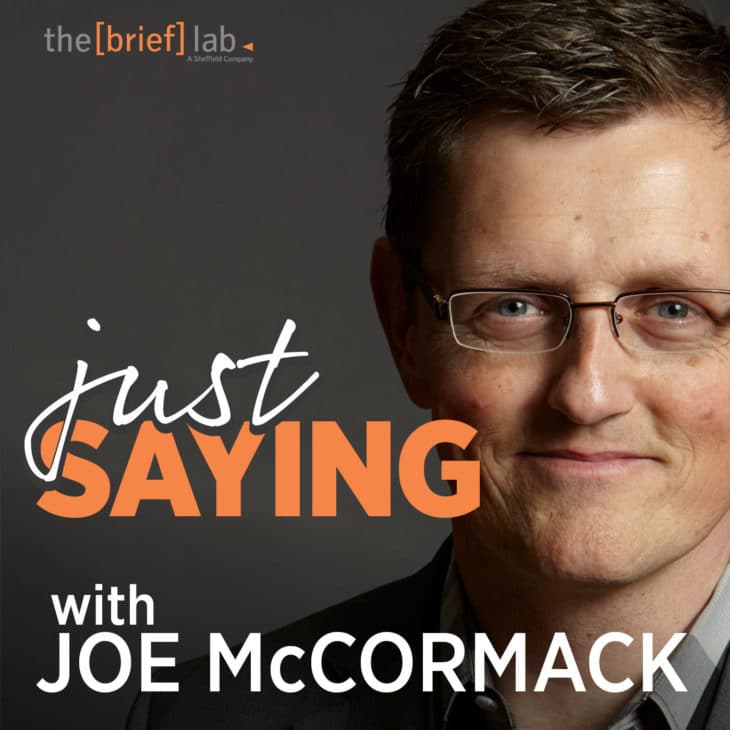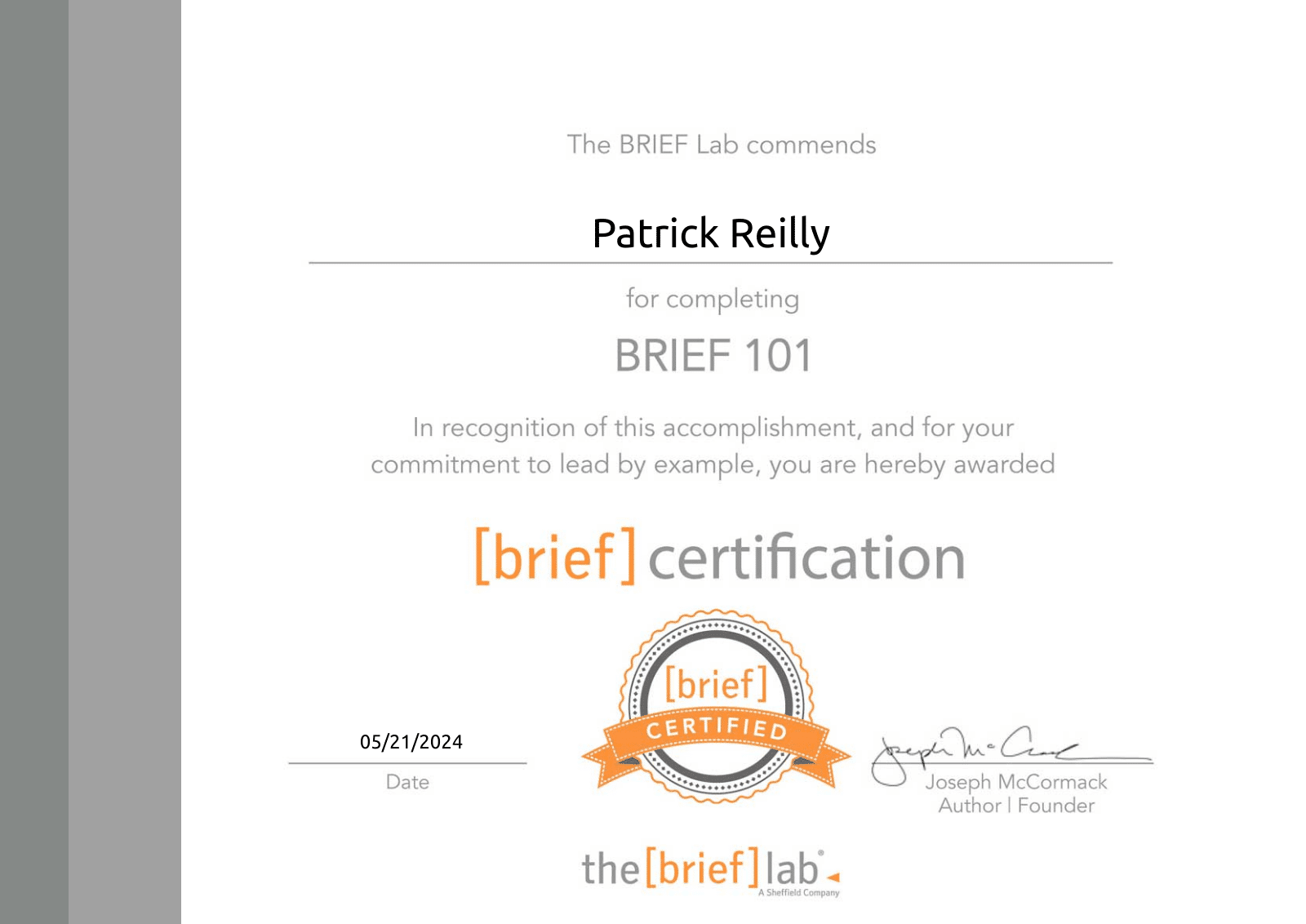BRIEF 101 for CCAD
Tool and Resources
Pre-course
BRIEF Tools
BRIEF Map®
Visual mapping tool to organize information clearly and concisely.
BRIEF D.R.A.F.T. Card®
Worksheet to determine how to communicate with a specific audience.
BRIEF Meeting Prep Card™
Visual mapping tool to prepare for and run effective meetings.
Just Saying Podcast
Hosted by Joe McCormack
This podcast can help you become an effective and efficient communicator in an age of information overload. Enjoy (just saying)!
Subscribe here:
EP. 72
As the saying goes, when you least expect it, expect it. Here’s what you can do to be ready when everyone else is caught off guard.
Links:
Impromptu: http://www.gbv.de/dms/zbw/896726819.pdf
Ep. 235
To influence is to exert a powerful force to shape people’s thoughts, feelings, opinions, and actions. In what way can we influence others by saying less? Is the absence of words strong enough (or not enough) to change the outcome? What is the right balance to achieve?
Ep. 256
Taking just a few minutes to get ready before communicating can translate into at least some success versus serving up another hot mess.
EP. 265
Wanting to be clear and concise, doesn’t mean that you are. As you listen to advice on how to become an intentional communicator, you may wonder how to assess your skills. In this week’s episode, I unveil a free BRIEF Communication Assessment to gauge your strengths and weaknesses in four important categories. To take the short survey, please go here
EP. 332
You expect a leader to talk like one. However, in a variety of moments professionals talk like amateurs. They speak over and for their subordinates, dilute their own words, and pull punches with weak, apologetic language. In this episode, I share three simple practices that can make you sound like you really run the place.
EP. 337
When you have something important to announce, do you take more time thinking about the messages you want to deliver than the people you’re empowering to deliver them? Critical information may never get through to the right audiences because leadership teams are too concerned about framing the right words and not spending enough time arming people to carry them. In this episode, I provide three simple steps to keep the messenger as much in mind as the message.




